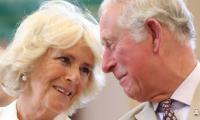As the continent scorched, the annual, exorbitant display of Sydney’s fireworks that mark the opening of the new year seemed a touch vulgar. This was not a time to be solemn or mournful; the bread and circuses had to continue coming.
The presenters of the ABC’s New Year’s Eve show attempted to put on a brave face, turning it to a donations run for those who had suffered loss in the bush fires. Even as they did, a floating haze was evident; Sydney could not escape from the reality that it was surrounded by flames.
Australian towns are starting to sound like besieged forts and desperate holdouts. The Victorian seaside town of Mallacoota has been elevated to something like a First World War Verdun against the onslaught of fire. Thousands had gathered on Tuesday at the boat ramp. Pictures of a blood red sky have been taken, most notably that of Allison Marion’s picture of her son, Finn.
But will the flames pass? The question is never far away from those engaged. For those directly fighting the flames, deaths are accumulating. Men like Sam McPaul of the Morven Rural Fire Brigade have become the fallen warriors of hoses and salvation.
The Morrison government, despite the calamities, would not let up in its boastful assertions on environmental soundness. Energy minister Angus Taylor, who is Australia’s de facto environment minister (that portfolio has little relevance in Australia, except for granting mining approvals) took to The Australian to claim that the country had a record that should make people proud. “Australia meets and beats its emissions-reduction targets, every time.” The Kyoto targets were outdone by 129 million tonnes; the 2020 targets will be met by 411 million tonnes.
But the technique of such praise is always slanted; Australia was positively virtuous in climate change policy, yet was only “responsible for only 1.3 percent of global emissions, so we can’t single-handedly have a meaningful impact without the co-operation of the largest emitters such as China and the US.”
Australia had been fighting climate change as dedicated troopers against the odds. Pity that the odds were themselves compounded by his government’s own scepticism at the very idea that disastrous burning events might be an effect of climate change. Selective accounting is the panacea sought in this regard, and Taylor does so by picking figures that exclude, for instance, emissions from the fossil fuels Australia digs and exports.
Like an arms exporter with an amoral compass and a mind for the selective, the claim here is that Australia cannot be responsible for what others do with the earth’s loot, despite actually providing them in the first place.
Those actually versed with export and production figures tend to raise their eyebrows when Taylor takes to the podium of praise. Frank Jotzo, director of the Centre for Climate and Energy Policy at the ANU Crawford School of Public Policy, was politely damning. “I would characterise [Taylor’s article] as a selective use of statistics that make Australia’s emissions trajectory look good, when in reality it does not look good at all.”
A study by Climate Analytics published in July 2019 does much to shred the Taylor worldview in this regard. As the authors note with severity, “Australia is the world’s largest coal (thermal + metallurgical) exporter, accounting for 29 percent of traded coal globally in 2016 and will soon be the world’s largest natural gas (LNG) exporter. As a consequence, Australia’s global carbon footprint is very significant, with exported fossil fuel emissions currently representing around 3.6 percent of global emissions.”
Hardly insignificant, and even more damnable considering that Australia is in the big league when it comes to per capita emissions of carbon, including exports. China, for instance, is surpassed by a factor of 9; the US by 4, India by 37.
Excerpted from: ‘Australia Burns:Fireworks, Bush Fires and Denial’.
Courtesy: Counterpunch.org
People stand in line up as election officials check their ballot papers during voting general election at a polling...
Women show their voter identity cards as they stand in a queue before casting their votes in Agartala. — PTIThe 18th...
Former prime minister Imran Khan. — Instagram/ imrankhan.ptiAn old saying has it that “when you dance with the...
Kashmiris in Indian illegally occupied Kashmir protesting against the Indian occupation as the forces of India looked...
A representational image showing residents walking at a wholesale market in Karachi. — AFP/FileOnce again there is...
A representational image showing late Pakistani human rights activist and Supreme Court lawyer Asma Jahangir. —...







